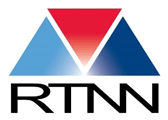NC State researchers are now using a microfluidic system to create quantum dots across the visible light spectrum. The use of microfluidics significantly reduces manufacturing costs and enables real-time process monitoring. Quantum dots can be used in a variety of applications including LED displays and solar energy. For more information, visit the NC State News Release or the original paper in Advanced Functional Materials (details below).
Authors: Kameel Abdel-Latif, Robert W. Epps, Corwin B. Kerr, Christopher M. Papa, Felix N. Castellano and Milad Abolhasani, North Carolina State University
Published: March 15, Advanced Functional Materials
Abstract: In an effort to produce the materials of next-generation photoelectronic devices, post-synthesis halide exchange reactions of perovskite quantum dots have been explored to achieve enhanced band-gap tunability. However, comprehensive understanding of the multifaceted halide exchange reactions has been inhibited by their vast relevant parameter space and complex reaction network. In this work, we present a facile room temperature strategy for rapid halide exchange of inorganic perovskite quantum dots. We provide a comprehensive understanding of the halide exchange reactions by isolating reaction kinetics from precursor mixing rates utilizing a modular microfluidic platform, QDExer (Quantum Dot Exchanger). We illustrate the effects of ligand composition and halide salt source on the rate and extent of the halide exchange reactions. Our fluidic platform offers a unique time- and material-efficient approach for studies of solution phase-processed colloidal nanocrystals beyond those studied here and may accelerate the discovery and optimization of next-generation materials for energy technologies.

